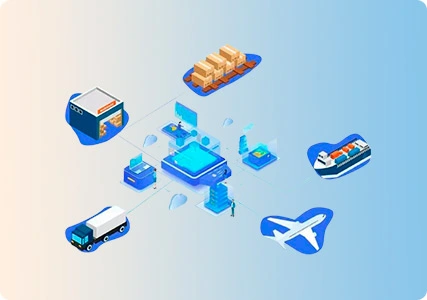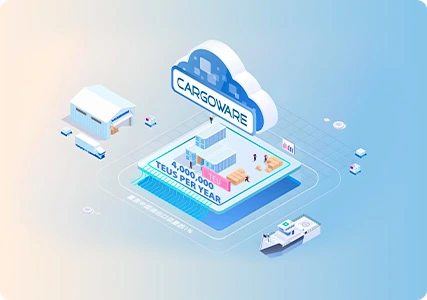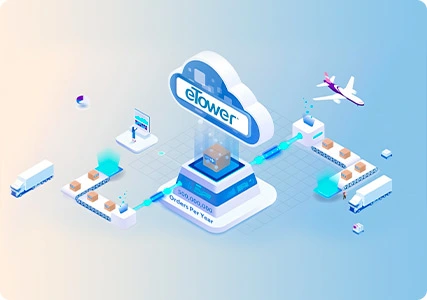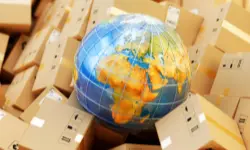The foundation of contemporary trade is logistics transportation, which makes it possible for products and services to be moved effectively from producers to customers all over the world. To put it simply, it's the complex network of procedures and actions that go into organizing, carrying out, and managing the movement of goods so they arrive at their destination safely, efficiently, and on schedule.
Logistics and transportation are now more advanced than ever at a time of globalization and internet connectivity. To optimize their supply chains and transportation logistics management businesses rely on cutting-edge technologies like GPS tracking, real-time data analytics, and automated inventory management systems.
Significance of Transportation Logistics
Coordination of Various Transportation Modes
Transportation logistics, at its core, is the coordination of many means of transportation road, rail, air, sea, and even pipelines to maximize the flow of commodities. Demand forecasting, inventory management, shipment tracking, route planning, and carrier selection are just a few of the crucial tasks that are included in this process. Businesses may improve customer happiness, cut expenses, and streamline their supply chains by seamlessly integrating these activities.
Route Planning
Route planning is one of the key components of transportation logistics. Businesses must ascertain the most economical and effective shipping routes, taking into consideration variables like distance, traffic, climate, and transportation laws. Modern technology, such as Geographic Information Systems (GIS) and route optimization software, is utilized to evaluate these variables and find the best routes that save travel time and expense.
Carrier Selection
An additional crucial component of transportation logistics is carrier selection. Reliability, capacity, transit time, and cost are just a few of the factors that businesses must consider when selecting the appropriate carriers. Among the major participants in this process are freight forwarders, shipping firms, and third-party logistics providers (3PLs). Working together with reliable carriers guarantees the prompt and safe delivery of goods, enhancing the company's reputation and gaining the trust of its clients.
What Is Transportation And Logistics?
The domain of supply chain management has two fundamental elements that fulfill separate yet connected functions: transportation and logistics. Let's examine the subtle differences between logistics and transportation and how they work together to guarantee the smooth flow of goods in the contemporary business environment.
Logistics: The Overarching Framework
The broad strategic framework of Parcel Logistics Management manages the flow and storage of products and information along the supply chain by incorporating a variety of operations. It entails careful process design, execution, and coordination in addition to the actual transportation of goods.
Demand forecasting, inventory control, warehouse management, order fulfillment, packaging, and distribution are examples of logistics-related tasks. Essentially, logistics focuses on streamlining the entire supply chain to guarantee that goods are accessible at the appropriate time, location, and quantity.
Transportation: The Act of Moving Physically
The actual physical transfer of commodities from one place to another is referred to as transportation, which is a subset of logistics. It entails choosing the best means of transportation to carry goods throughout the supply chain, such as trucks, trains, ships, airplanes, or a mix of these.
Aspects like route design, carrier selection, freight rates, and delivery dates are all important in the transportation industry since they deal with the actual movement of goods. By following the timetables established by the logistics planning procedure, it guarantees that goods are transported effectively and dependably.
Synergy between Logistics and Transportation
Despite being two separate ideas, logistics and transportation are closely related and necessary for smooth supply chain operations. The strategy framework for logistics is provided, directing choices for storage locations, inventory levels, and order fulfillment procedures.
As the actual branch of logistics that carries out these strategic goals, transportation makes sure that goods are delivered on schedule and to the appropriate locations.
What Is The Transportation And Logistics Industry?
The global economy relies heavily on the transportation and logistics sectors to facilitate the smooth flow of products and services from producers to consumers throughout the world. Transportation, the actual moving of goods, Integrated Logistics Management, and the tactical handling of supply chain operations are two of this industry's many facets. Collectively, they establish an optimal framework that helps companies handle the intricacies of global commerce and satisfy contemporary market needs.
Transportation: Bringing Distance and Modes
There are many different forms of transportation, such as pipelines, roads, rails, aircraft, and the sea. Rail travel effectively manages huge volumes over long distances, whereas road transport provides flexibility and accessibility for short to medium distances.
While maritime transport is most suited for transcontinental trade and guarantees the economical transit of large freight, air transport offers unparalleled speed and connects enterprises worldwide. Conversely, pipelines handle gases and liquids, guaranteeing a continuous supply of essential materials.
Logistics: Supply Chain
Optimizing each phase of the supply chain is the aim of logistics. Coordination of transportation, inventory control, order fulfillment, warehousing, and careful planning is required. Enterprises can reduce costs and improve customer satisfaction by implementing contemporary technologies that boost operational efficiency, like transportation management systems (TMS) and warehouse management systems (WMS).
Industry Challenges and Innovations
Adherence to sustainable practices, strict regulations, and volatile fuel prices are some of the hurdles the business must overcome. Innovative solutions like blockchain technology for safe transactions, Internet of Things (IoT) devices for real-time tracking, and autonomous cars for better routes are transforming the logistics and transportation industries to solve these problems.
What Is Transportation Logistics Management?
Streamlining the movement and distribution of goods along the supply chain is the aim of transportation logistics management. Painstaking coordination of multiple elements is necessary to ensure the seamless flow of goods from producers to consumers. You can click here to learn about how modern commerce is built on this crucial function, which enables businesses to improve customer satisfaction and operational effectiveness.
Carrier Selection and Collaboration
Choosing the appropriate carriers is crucial for managing shipping logistics. Companies assess carriers according to standards such as cost, capacity, and dependability. Developing strategic alliances with reliable product forwarders, carriers, and third-party logistics companies guarantees the safe and prompt delivery of goods. Businesses can manage complex transportation networks and reliably meet customer demands when they collaborate effectively with carriers.
Demand Forecasting and Inventory Management
Demand forecasting, inventory control, and transportation logistics management are closely related. Businesses can avoid stockouts and cut down on extra inventory expenses. With the aid of data analytics and market insights, businesses can enhance transportation logistics and guarantee economical and effective product delivery through precise demand forecasting.
Real-Time Tracking and Visibility
Real-time tracking and visibility are now essential for transportation logistics management in the digital era. With the use of IoT devices, RFID, and GPS technology, businesses can keep an eye on shipments in real time. Due to the useful insights this visibility offers into the flow of goods, firms can proactively handle possible problems like delays or route deviations.
Remarks
Global trade relies heavily on logistical transportation to link manufacturers and consumers across continents. The dynamic, ever-changing transport and logistics sector serves as the foundation of the world economy. An important factor in forming the global marketplace is the transportation and logistics sector. In a dynamic and strategic field, transportation logistics management unifies several supply chain elements. Enterprises may efficiently manage the intricacies of the worldwide supply chain by adopting cutting-edge technologies.










